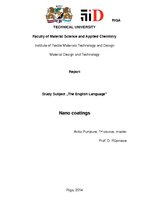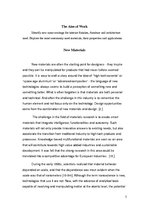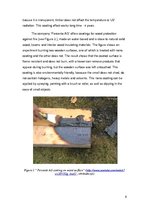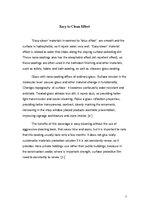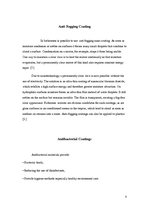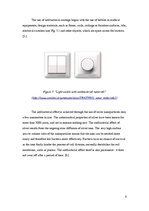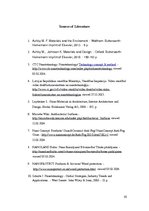-
Nano Coatings
| Nr. | Chapter | Page. |
| The Aim of Work | 3 | |
| New Materials | 3 | |
| Nano Coatings for Wood surfaces | 5 | |
| Easy to Clean Effect | 7 | |
| Anti Fogging Coating | 8 | |
| Antibacterial Coatings | 8 | |
| Source of Literature | 10 |
Anti Fogging Coating
In bathrooms is possible to use anti fogging nano coating. As soon as moisture condenses or settles on surfaces it forms many small droplets that combine to cloud a surface. Condensation on a mirror, for example, stops it from being usable. One way to maintain a clear view is to heat the mirror continually so that moisture evaporates, but a permanently clear mirror of this kind also requires constant energy input. [7.]
Due to nanotechnology a permanently clear view is now possible without the use of electricity. The solution is an ultra-thin coating of nanoscalar titanium dioxide, which exhibits a high surface energy and therefore greater moisture attraction. On hydrophilic surfaces moisture forms an ultra-thin film instead of water droplets. It still settles on the surface but remains invisble. The film is transparent, creating a fog-free clear appearance. Bathroom mirrors are obvious candidates for such coatings, as are glass surfaces in air-conditioned rooms in the tropics, which tend to cloud as soon as outdoor air streams into a room. Anti-fogging coatings can also be applied to plastics. [5.]
…
The Aim of Work Identify new nano-coatings for interior finishes, furniture and architecture used. Explore the most commonly used materials, their properties and applications. New Materials New materials are often the starting point for designers - they inspire and they can be manipulated for products that had never before seemed possible. It is easy to craft a story around the idea of "high-tech ceramic" or "space-age alumnium" or "advanced composites" - the language of new technologies always seems to build a perception of something new and something better. What is often forgotten is that materials are both personal and technical. And often the challenge in this industry is to remember the human element and not focus only on the technology. Design opportunities come from the combination of new materials and design. [2.]
Atsevišķas atsauces nekvalitatīvas.

